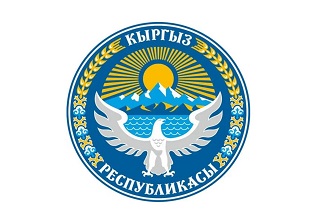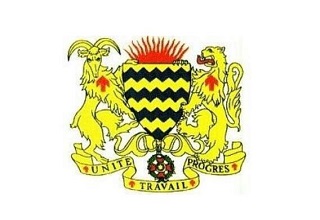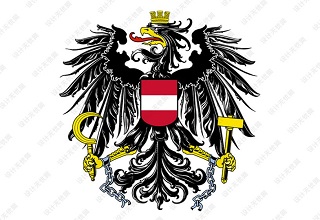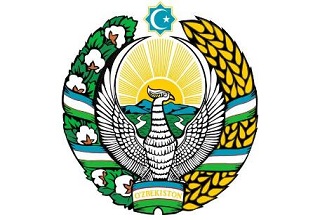Announcement on imported Chile's fresh fruits plant quarantine requirements
1. Inspection and quarantine basis
(1) "The Law of the People's Republic of China";
(2) The "Law of the People's Republic of China in and out of the country" and the implementation regulations;
(3) "Food Safety Law of the People's Republic of China" and implementation regulations;
(4) "Measures for the Supervision and Supervision and Supervision and Quarantine of Entry Fruits";
(5) The "Protocol for the General Administration of Customs of the People's Republic of China and the Ministry of Agriculture of the Republic of Chile on the Requirements on the Quarantine of the Chilean Fresh Frozen Fruits".
2. Allow the name of entering the country
Fresh nuclear fruit (hereinafter referred to as nuclear fruit), including oil peach prunus persica var. Nectarina, Peach Prunus Persica, apricot Prunus Armeniaca, and Li PRunus DomeStica / Prunus Salicina.
Third, the place where allowed
Chilean nuclear fruit produces between the fourth region of Kokkin and the ninth region of Aracania, including the Capital (MR) and the 16th region of Nibler.
Fourth, approved orchard, packaging factory
The transmission of China Nuclear Orchard, Packaging Factory, Refrigeration Library and Cold Treatment Facilities shall be reviewed and recorded in the Chilean Agriculture and Animalial Bureau (hereinafter referred to as Chile) representing the Ministry of Agriculture of the Republic of Chile. register. The registration information should include names, addresses, and registration numbers, so that the source can be accurately traced when exported goods do not meet the relevant requirements. Chile should supervise the implementation of the registered orchard, packaging factory, refrigerated library and cold treatment facilities, and provided the registration list to the Chinese side by the Chile to the Chinese side before the annual export season. After the Chinese side is approved and approved, the Chinese side will announce the registration list on the official website.
5. The list of quarantine and harmful biological lists that China pays attention to
1. Mediterranean CERATITIS CAPITATA
2. Brachycaudus Trartogonis
3. Apple moth Cydia Pomoneella
4. Elm oyster shield lepidosaphes ulmi
5. Peach Baiyuan Shield EpidiaSpis Leperii
6. LobeSia Botrana
7. Rose short beak elephant Pantomorus Cervinus
8. Peach black short -tailed aphid Brachycaudus Persicae
9. Australian Frankliniella Australis
10. Chilean fruit rolling PROEULIA AURARIA
11. Rolling Moth ProEulia Chrysopteris
12. Lilac Intellogenesis (citrus epidemic germs) PHYTOPHORA SYRINGAE
13. Dali Flower Wheel Spories (Cotton Yellow Alasmid Buns) Verticillium Dahliae
14. US -Australian nuclear fruit brown rot bacteria Monilinia Fructicola
15. Plum Pox Virus
16. Li is a necrotic spots virus Prunus Necrotic Ringspot Virus
17. Tomato Ringspot Virus
18. Tomato Black Ring Virus
19. Stigmina Carpophia (= Wilsonomycess Carpophilus)
6. Requirements before export
(1) Orchard management.
1. The orchards should implement good agricultural operation specifications, maintain the hygiene conditions of the orchard, clean up fruit in time, eliminate rotten fruits when harvesting, or perform plant quarantine management to control possible harmful creatures. The implementation of comprehensive management of harmful biology, including regular control measures such as harmful biological monitoring, chemistry or biological control, and agricultural operations.
2. Chile shall carry out orchard monitoring in accordance with the Chinese plant quarantine measures No. 6 in accordance with the international plant quarantine measures. In the first year of trade, monitoring plans and corresponding comprehensive prevention measures must be supervised by Chile, and detailed measures should be required to provide China. The dangers of orchards should be implemented under the supervision and guidance of technical personnel, and technicians need to receive training from Chile or their authorized agencies.
3. The transition orchard must retain the monitoring and prevention records of harmful creatures, and should be provided to the Chinese side. Control records include detailed information such as the name, active ingredients, application date, pharmaceutical concentration and amount of use in all chemicals used during the growth season.
4. Chile will supervise the implementation of each orchard. Only the orchards that meet the above regulations can be exported to China.
5. Loan orchards must conduct agricultural residue testing and analysis before fruit picking to ensure that the fruits meet the national standards of Chinese food safety. The test results need to be provided to the corresponding packaging factory.
6. For the Mediterranean solid flies, control measures must be carried out in accordance with the memorandum signed by China Zhi. Chile must carry out monitoring based on the requirements stipulated in the national monitoring system and notify the monitoring results to the Chinese side each year. Once the Mediterranean flies are found in the monitoring, Chile needs to immediately notify the Chinese side to explode, and cancel the recognition of non -epidemic states in the affected areas, and effectively prevent and control it.
7. For apple moths, the losing orchard should establish an apple moth pheromone capture monitoring system or other wise recipes recognized monitoring system in order to take control measures. Chile should request the annual monitoring report.
(1) The orchard must monitor the apple moth under the supervision and guidance of the Chile technical personnel. From the flowering period to the harvest period, the orchard monitoring is performed with a traps and visual inspections. Whether there is a harmful creature in it, take any necessary plant quarantine measures. Set the traps in the orchard according to the density specified by each capture manufacturer.
(2) In view of the low correlation between apple moth and plums, the liquor is not required to be installed.
(3) Technicians must check the leaves and fruits, eliminate the existence of apple moth or check any symptoms to determine the number of harmful creatures and the time to start control, and take any necessary plant quarantine measures. Chile shall supervise and verify plant quarantine measures and weekly capture system inspection records.
(4) If any living apple moth larva is found in the fruit garden or packaging factory, measures must be taken immediately. If the apple moth is intercepted for the first time, the intercepted nuclear fruit type will be suspended this season. The remaining nuclear fruits must take control measures to continue exporting. If the apple moth is intercepted for the second time on the same nuclear fruit, the orchard exports will be suspended this season.
8. In response to the grape flower wings small rolling moths, monitoring shall be implemented by Chile according to the requirements stipulated in the national monitoring project, and monitoring census work must be carried out on different fruits. Chile shall request the annual monitoring report.
(1) The transmission packaging plant must carry out the monitoring of grape flower winged moth under the supervision and guidance of Chile technicians under the supervision and guidance of Chile technicians. The density of the capture device in the packaging plant is set up one capture per 2500 m2, and at least one capture device is set in each packaging factory, and it is checked once every 2 weeks.
(2) Monitoring must be performed under the supervision and guidance of Chile technical personnel in the orchard. The technicians will check whether the leaves and fruits are presented or their symptoms. Monitoring should be carried out before the start of nuclear fruit harvest. Only the orchards that are not found in the fruit in the fruit can be harvested and packaged.
(3) For example, the grape -winged winged moths that are not mature in the fruit garden or packaging factory are found during the test of the fruit of the mature insect state. Chile will suspend the qualifications of the related varieties of the relevant nuclear orchards and immediately notify the Chinese side. It should be required that Chile should provide China with investigation reports or management records about the harmful creatures.
9. For fungi and viruses, it should be included in the monitoring plan of the Chile country and implemented monitoring (see Annex 1 for specific prevention and control measures). If any suspicious symptoms are found, the laboratory detection must be taken. If the quarantine virus is found in the orchard monitoring, comprehensive governance measures must be taken to control the occurrence of viruses to ensure that nuclear fruit does not carry these viruses.
10. For leaf curl moths, aphids, scriptworms, and other harmful creatures, the orchard should be monitored under the supervision and guidance of the technical personnel of Chile. From blooming to harvesting, focusing on whether branches, stems, leaves, and fruits have aphids, shells, shells, shells, shells, shells, and shells. The occurrence of other harmful creatures that worms and Chinese are concerned about. If any harmful creatures or corresponding symptoms are found, measures should be taken immediately, such as the prevention and treatment of biological, physical or chemical methods to control the occurrence of harmful creatures.
(2) Packaging plant management.
1. The processing, packaging, storage, and transportation process of the transit nuclear fruit must be performed under the supervision of the wisdom square quarantine. The packaging factory and refrigeration library must have good sanitary conditions and have measures to prevent harmful biological re -infection (such as insect -proof nets, etc.).
2. The altoscular nuclear fruit must be packed in the packaging and authorized packaging and authorized by Chile. The packaging plant and all refrigeration libraries must have good hygiene conditions. The packaging production line must be able to clean, classify, pack and store oil peaches and peaches at low temperatures.
3. During the packaging process, oil peaches and peaches must be cleaned and disinfected, and they are treated with post -mining sterilizers; given the characteristics of apricot, Li, and some varieties of peaches and oily peaches, they cannot be cleaned. Destiny. During the packaging process, the fruits must also be screened and classified to ensure that there are no insects, mites, rotten fruits, branches, leaves, roots or soil without any insects, mites, rotten fruits, rotten fruits.
4. The results of the agricultural residue analysis of the transmission of the China Nuclear Oriphesu Park should be provided to the corresponding packaging factories, and it should be provided to the Chinese side.
(3) Packaging requirements.
1. The packaging materials should be clean and unused, which meets the requirements of China's relevant plant quarantine. If the packaging box has a ventilation hole, the insect -proof net (maximum pore diameter 1.6 mm) or a micropore packaged bag covers each packaging box for ventilators or the entire tray to prevent insects from entering. If the wooden packaging is used, it must meet the requirements of the international plant quarantine measures No. 15 (ISPM 15).
2. The fruits installed in the final outlet box must be stored in the refrigerator, and the fruits that are not installed in the final outlet are not allowed to store them in the refrigerator and follow the procedures formed by the smart recipe. Avoid re -infection of harmful creatures.
3. Each packaging box must be marked with English names (oil peach, peach, apricot or Li), origin (district, city or county), export country, orchard name or registration number, packaging factory name or registration number. Each tray must be marked in Chinese or English "to the People's Republic of China" or "Exported to the People’ s Republic of China ". The same logo must be used on the box that does not use the pallet.
4. The types of nuclear fruits listed above can be installed in the same container to lose China if it meets all the measures listed in this announcement.
(4) Quarantine treatment requirements.
All transit fruit from the Mediterranean real flooding area shall be carried out in cold, and it must be implemented under the supervision of Chile officials or their authorized personnel. Cold treatment can be performed according to the cold treatment operation program (Annex 2) before exporting (Annex 2) or the cold treatment operation program (Annex 3) during the exit transportation. Cold treatment technical indicators are fruit heart temperature ≤0.5 ° C, and continuously processed for 15 days.
(5) Inspection and quarantine before export.
1. For the newly approved peaches and apricots, within the first two years of the trade, Chile officials should implement export inspection and quarantine on the transmission of Chinese nuclear fruit at a ratio of 2%. Fruit examination. If there is no plant quarantine problem in two years, the sample ratio can be reduced to 1%, and the sampling amount must not be less than 600 fruits. For oil peaches and Li, which have been admitted before, maintain a 1%level of sampling.
2. If the quarantine is found to be concerned by the Chinese side, the entire batch of goods shall not be exported to China. For example, for the first time, the apple moth or small grape flower wings moth will be suspended, and the intercepted nuclear fruit types in the related orchard will be exported to China this quarter. If the second test is detected, all types of the orchard will not be exported. In addition, Chile will evaluate whether the corresponding packaging factory will be suspended based on the survey results. Chile should find the reason and take preventive measures for improvement. At the same time, saving the seizure record should be provided to the Chinese side.
(6) Plant quarantine certificate requirements.
1. For the qualified nuclear fruit, Chile should issue a plant quarantine certificate, indicate the name or registration number of the orchard and packaging factory, and fill in the following additional statements: "This consignment complies with the requirements special in the protocol of Phytosanitary Rely quirements for export of fresh fruits From Chile to CHINA, and is free from any quarantine pests of confern to China. "
2. For the Chilean nuclear fruits before exporting cold treatment, the processing temperature, duration and processing facility name or code need to be indicated on the plant quarantine certificate. For cold treatment during transportation, the "Cold Treatment in Transit" should be marked on the plant quarantine certificate, and the temperature, duration, container number and sealing number of cold treatment shall be indicated.
3. Before the start of the trade, Chile should provide Chinese samples with a plant quarantine certificate in order to confirm and record.
7. Entry inspection and quarantine and unqualified treatment
When the Chinese Customs reached the port of China, the Chinese Customs implemented inspection and quarantine in accordance with the following requirements.
(1) Certificate and logo verification.
1. Check whether the imported nuclear fruit obtains the "Entry and Plant Quarantine License".
2. Check whether the plant quarantine certificate meets the provisions of Article 6 (6) of this announcement.
3. Check whether the identification on the packaging box and the tray meets the provisions of Article 6 (3) of this announcement.
4. For the cargo that implements cold treatment before export, check the cold treatment report confirmed by Chile and the correction of the fruit temperature probe; for the cargo that implements cold treatment during transportation, check whether there is a cold treatment report and the record correction record of the fruit temperature probe.
(2) Entry inspection and quarantine.
1. The transmission of Chinese nuclear fruits should enter the port and airports of imported fruits from China.
2. In accordance with relevant laws, administrative regulations, and rules, inspection and quarantine on imported nuclear fruits, and those who pass the inspection and quarantine shall be allowed to enter the country.
(3) Unqualified processing.
1. If the nuclear fruit is found to be an unruly orchard, packaging factory or cold treatment facilities, the batch of goods is not allowed to enter the country.
2. Fruits from the real flies control area, such as cold treatment, is determined to be invalid, the batch of goods will be treated with shore -cooled treatment (can be performed in this container), returned, and destroyed treatment measures.
3. If any quarantine biological living or newly discovered quarantine -harmful creatures or soils are found by any of the quarantine or soil, the goods will be refunded, destroyed or quarantine.
4. If it is found that it does not meet the national standards of Chinese food safety, it will be returned or destroyed for the batch of goods.
5. If the above -mentioned unqualified situation is found, China will immediately notify Chile and suspend the import of nuclear fruit imports of related orchards, packaging plants and cold treatment facilities as according to the situation. Chile should find out the reasons that do not meet and take improvement measures to prevent similar situations from happening again. China will decide whether to cancel the suspension measures based on the results of the rectification of Chile.
This announcement is implemented from the date of issuance. Announcement of Annex 1 of the General Administration of Quality Supervision, Inspection and Quarantine of 2017 "Requirements for the Inspection and Quarantine of Chilean Oil Peach Invoication" at the same time was abolished at the same time.
Special announcement.
GACC
October 23, 2023




